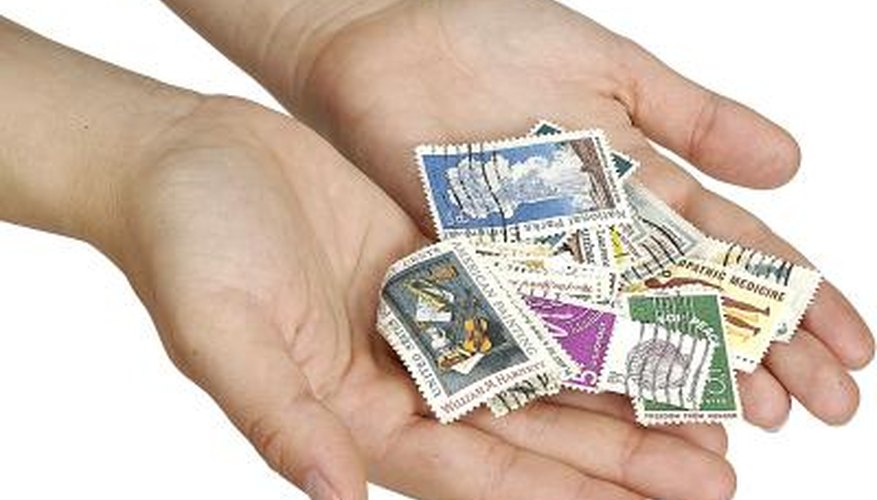In an increasingly digital world, it can be easy to forget how to send a letter through the mail. Addressing and stamping envelopes is the final step in mailing a letter, package or bill. Without a stamp, these items cannot be delivered to their receiver. When stamping an envelope it is important to determine how much the envelope weighs, as well as where the item is being mailed and how fast you want it sent. All of these concerns influence what type of stamp you should place on the envelope.
- In an increasingly digital world, it can be easy to forget how to send a letter through the mail.
- All of these concerns influence what type of stamp you should place on the envelope.
Place all necessary items in the envelope and seal it. Place the envelope on a scale and obtain weight reading in grams. If the package is less than 100 g (3.5 oz), you can mail it using one standard first-class stamp.
Determine how quickly you need the envelope to arrive at its destination. Using standard first-class stamps will generally get your envelope to its domestic destination in one to seven days, depending on how far the destination is from you. International shipment times vary. Consult your local postal service for the exact shipment time if you need the package to arrive quickly. Take the envelope to the post office to mail it at a different rate than first class.
- Determine how quickly you need the envelope to arrive at its destination.
- Consult your local postal service for the exact shipment time if you need the package to arrive quickly.
Calculate the amount of postage required to send the envelope to another country by consulting your country's postal service. The Post Office has an online postage rate calculator which requires you to put in the weight of the envelope, the destination address and any expedited shipping services you require.
Peel your first class stamps from their backing and place them firmly on the upper right-hand corner of the envelope. Most countries' stamps are now self-adhering and do not require moistening to make them sticky. However, if you do have stamps that require moistening, pull the stamps apart at the perforated edges, then lick or dampen the back and place them firmly in the upper right corner of the envelope.
Apply enough stamps for the weight of the envelope. Larger envelopes incur a higher charge for the same weight as a smaller envelope. Apply the stamps to the envelope using the same method described above.
